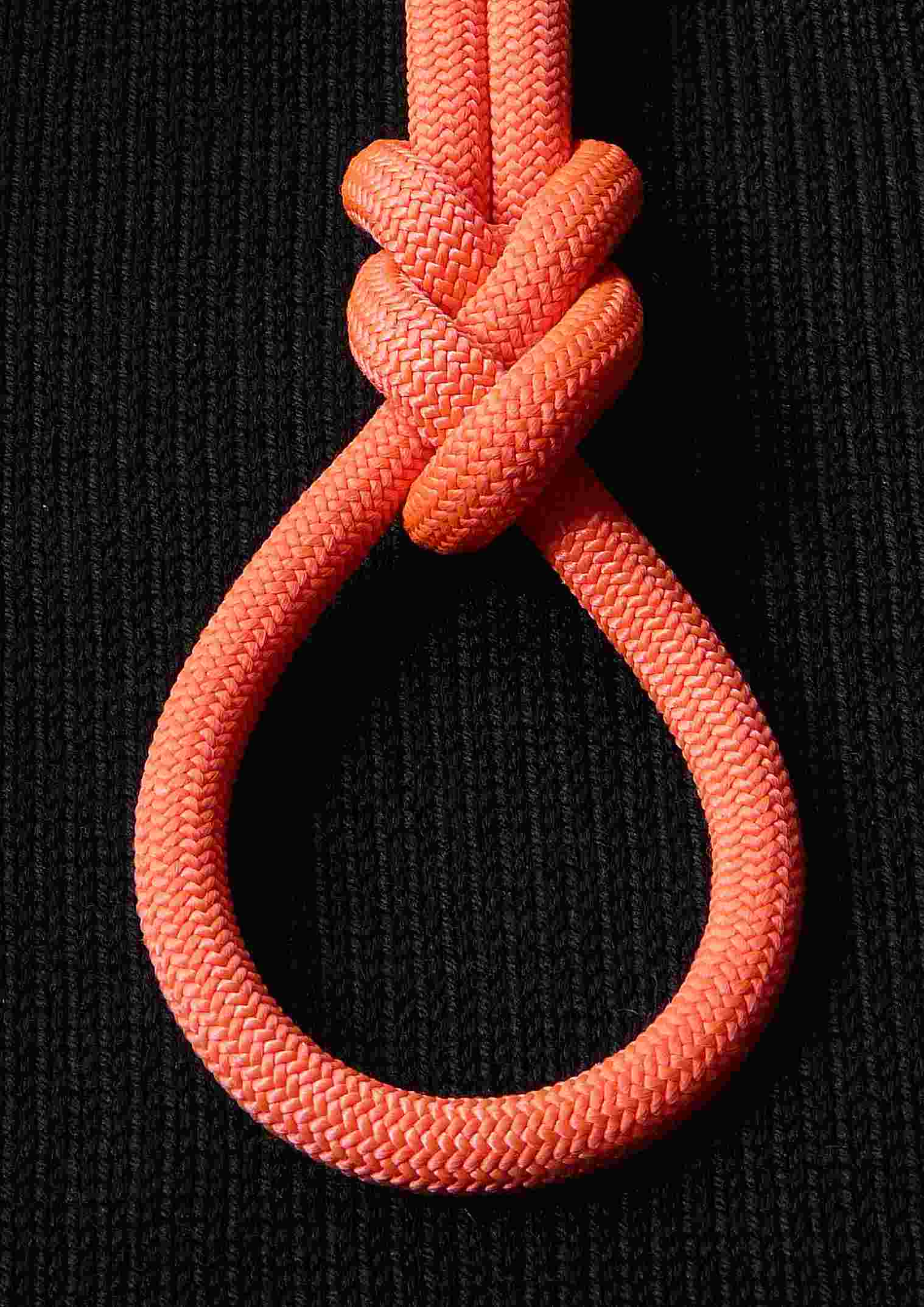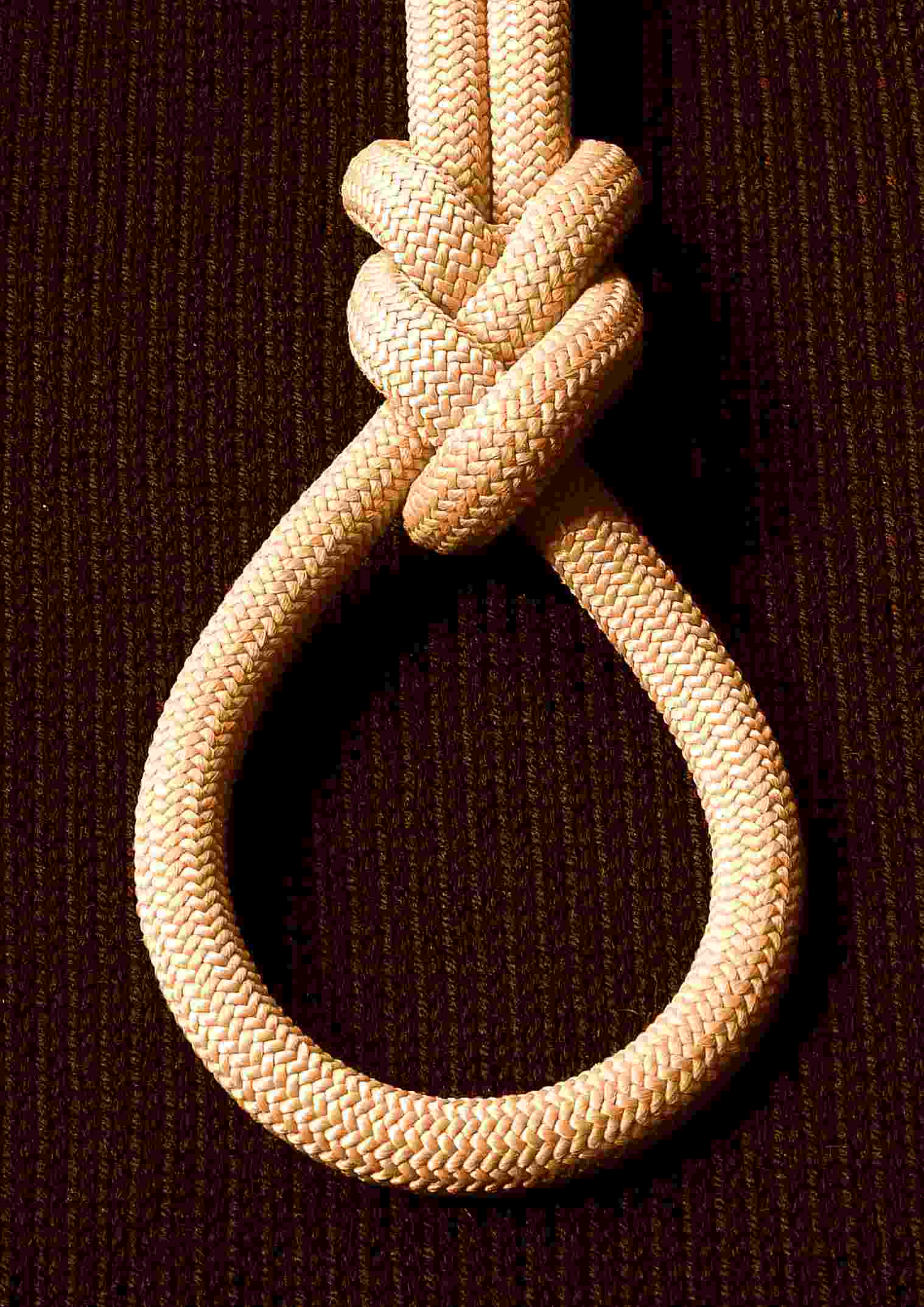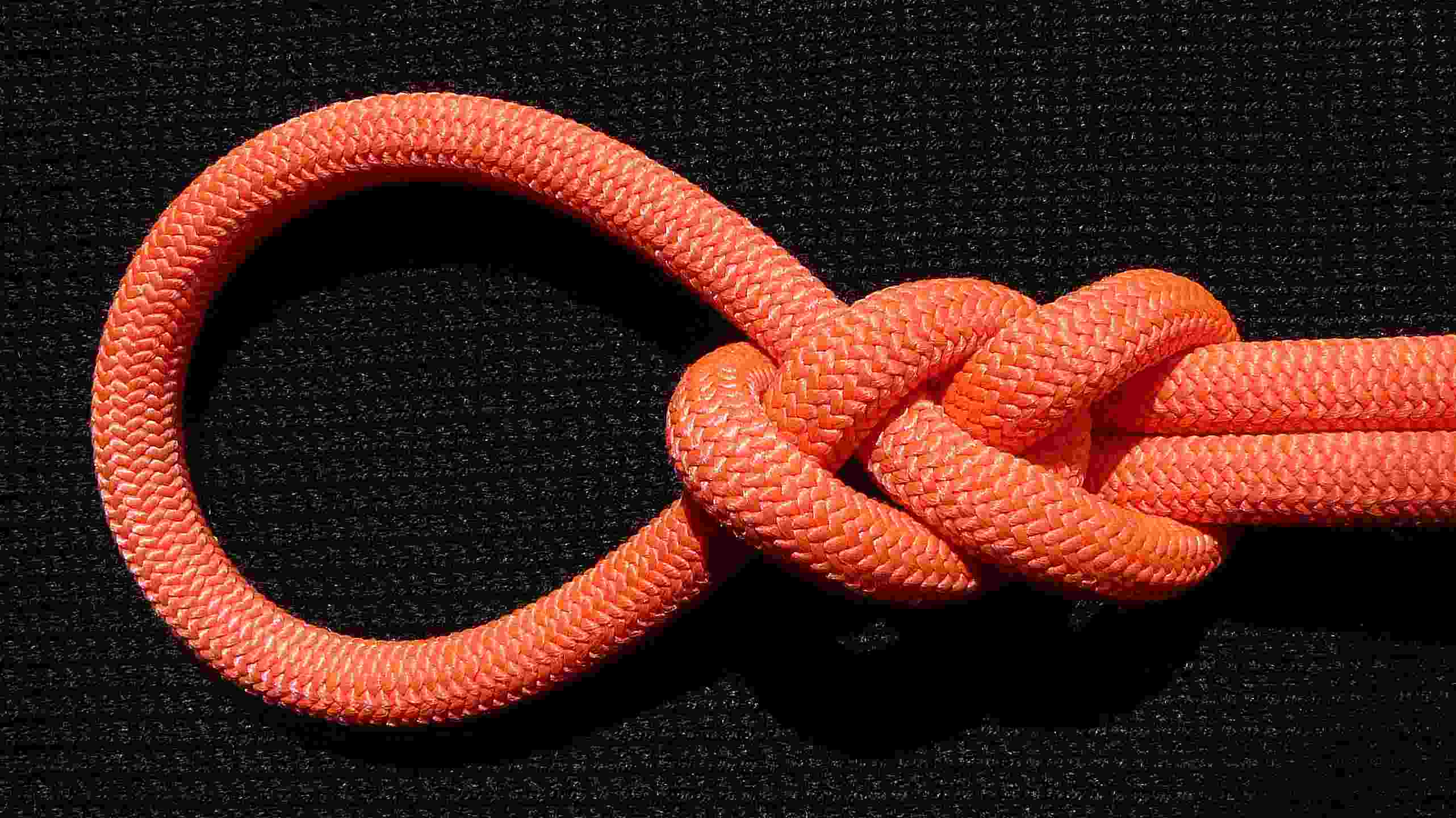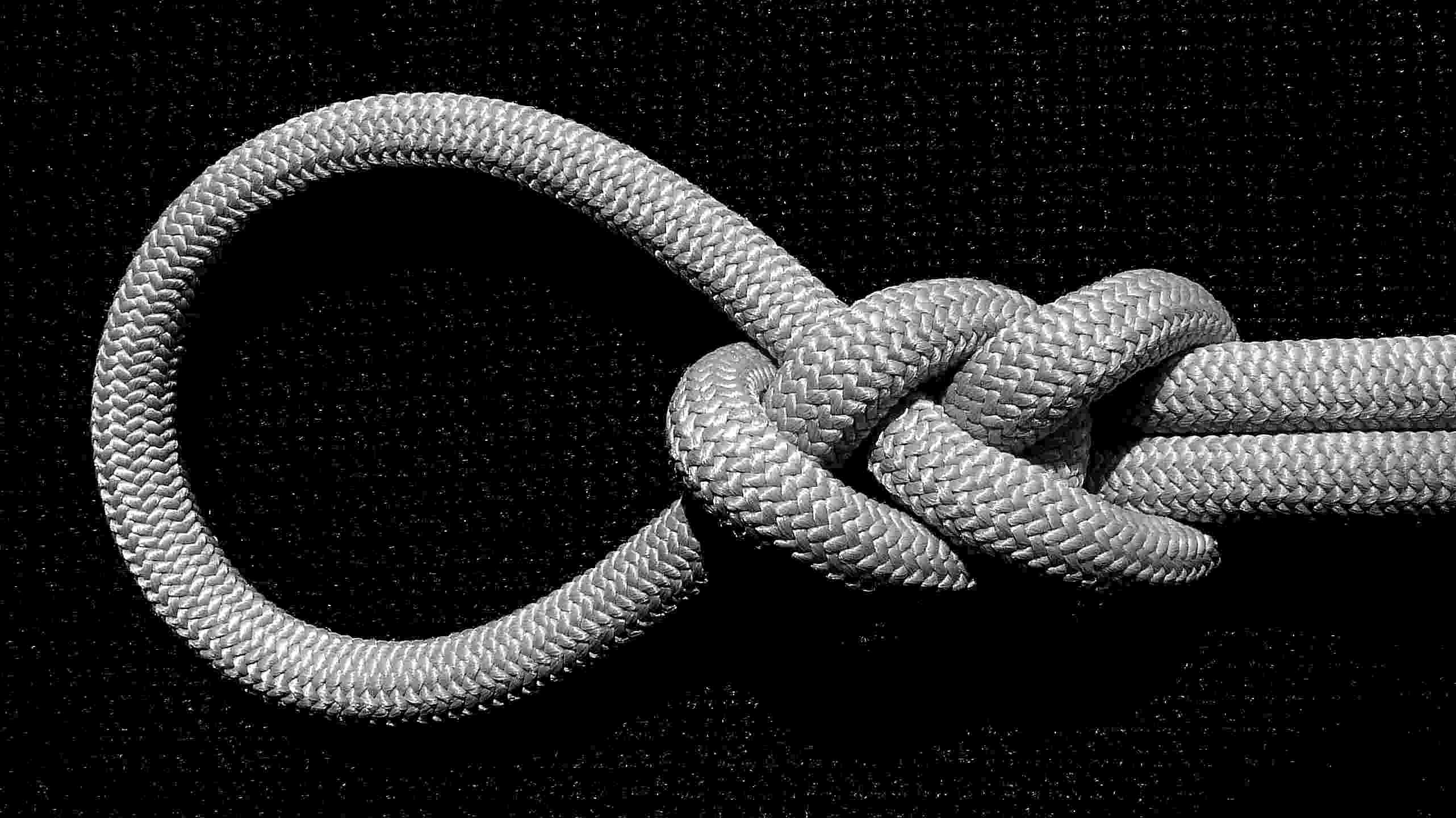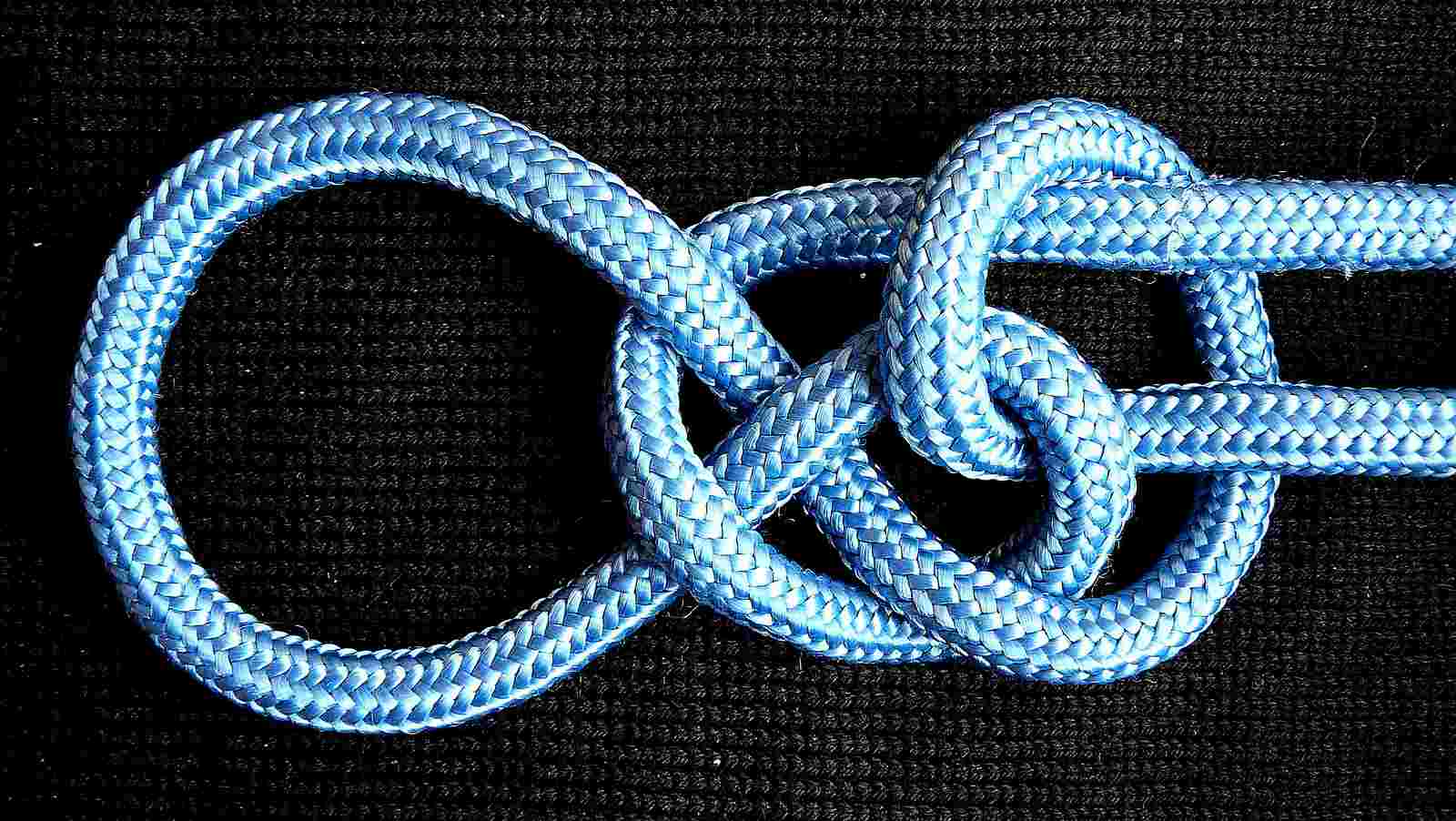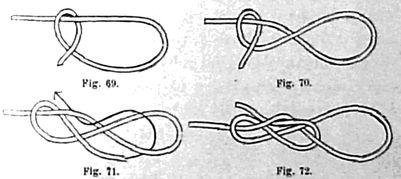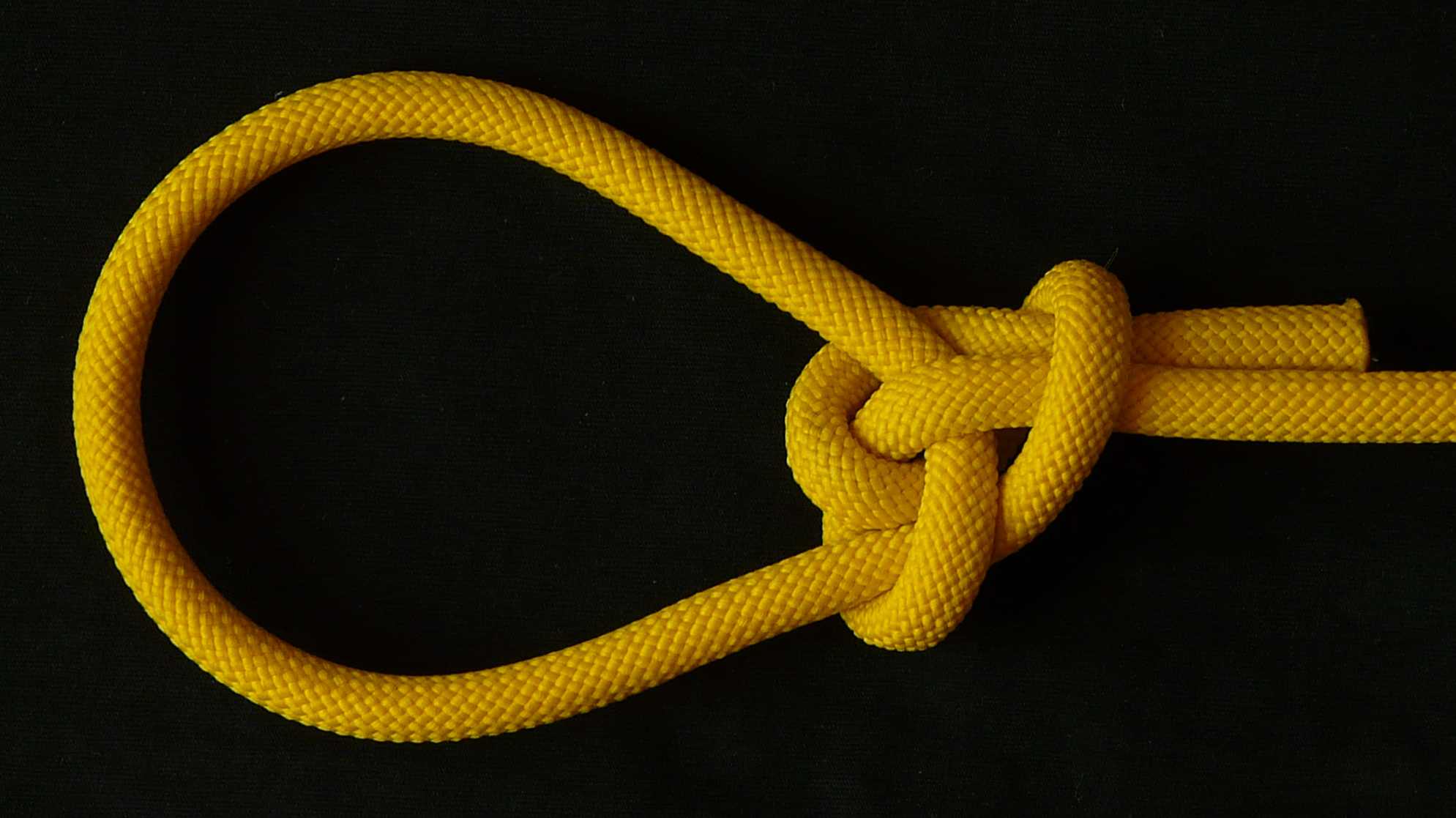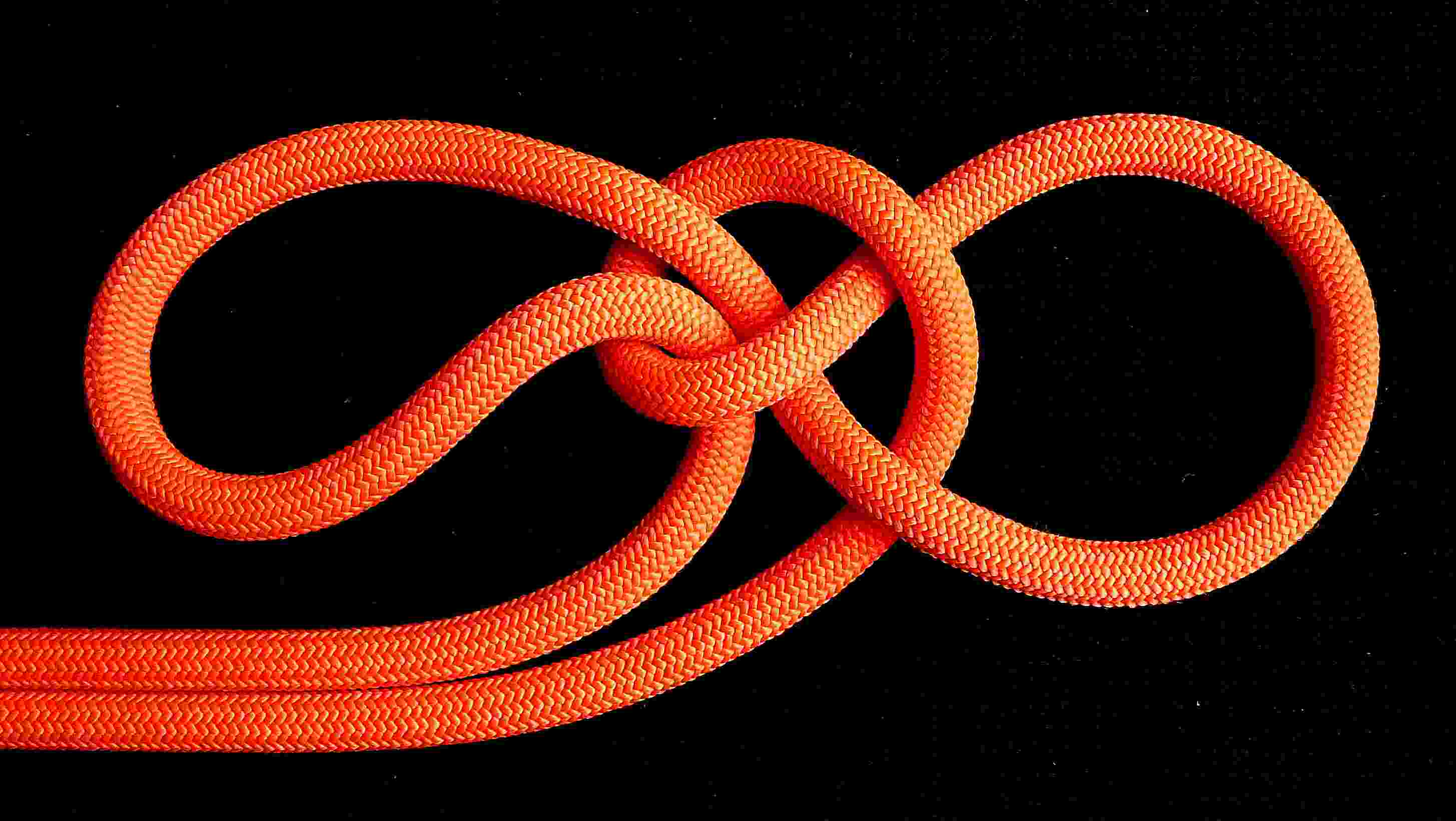Recently, it was pointed out that a TIB loop would be more versatile ( and safer, because it would not run the danger to be tied in the “wrong” orientation ) if it could be loaded by either end ( Either End Loadable, or EEL ). However, if a loop can be loaded by either end, it would be great if it can also be tied in-the-end as PET from either end, too - PETEE ( Post Eye Tiable, Either End ) - for a number of reasons :
1st. PET loops are, most of the times, easy to untie ( that is the greatest advantage of the bowline ), because the knot tied on the Standing Part before the eye is topologically equivalent to the unknot, so it is not a “closed” on itself knot, which can accumulate and lock within it the induced tensile forces, like the overhand knot or the fig.8 knot, for example - which, if/when heavily loaded, it may become difficult to untie, or even it may jam. With the exception of the Clove hitch and the Constrictor, most “nipping structures” tied on the Standing Part before the eye, in most PET loops, generate loops that are easy to untie. Therefore, if we want a loop which can be loadable by either end, it is reasonable to expect that if both knots tied on the Standing Part are PET, the one before the eye ( the “nipping structure” ), and the other after / post the eye ( the “collar structure” - which I call like this to retain a correspondence with the common bowline ), the loop would be easy to untie regardless the end by which it had happened to be loaded.
2nd. I have seen that, even loaded by the 50% of the total load, the knot tied after / post the eye, the “collar structure”) may become difficult to untie, if it is an overhand knot or a fig.8 knot.
3rd. Even a TIB loop which has been tied in-the-bight for any reason ( some loops can be tied in-the-bight more easily and quickly than in-the-end ), may happen to have to be untied in-the-end, so it would be great if there is no “relic” knot left on the one end, if the loop is untied by releasing the other end.
4th. Last, but not least : Versatility. No knot tyer would ever question that value !
The loop presented in this post would, most probably, have been tied many times in the past ( I, for one, had tied many times, while I was exploring many different families of loops ), but, after the “new” EEL and the PETEE conditions, I decided to re-evaluate it - and I now believe it is OK : it is TIB, EEL and PETEE, and it is a nice knot ( well, if we view it from the one “flat” side, which looks like a plait - hence its new name. We can only say that the other side was not kissed by the Graces… ![]() However, that second side in not sooo ugly, so the net outcome, regarding beauty, is a knot above the average. )
However, that second side in not sooo ugly, so the net outcome, regarding beauty, is a knot above the average. )
As I said, one can reach it from many different starting posts : it is a modified Englishman s knot, a re-tucked TIB Samisen bowline, a “Span bend” turned into an eyeknot, a variation of the ABoK#1055, etc. (*)
The important thing is that it is a most versatile eyeknot, which we should explore further.
P.S. 2015-05-17. As Alpineer indicated, the Plait loop can be considered a variation of the ABoK#1056 - and can be tied in-the-bight in exactly the same way, if we just “push” the lower collar of ABoK#1056 all the way “upwards”, to the top of the nub. If it is identical to the ABoK#1056 or not, is a subtle matter, because we do not know yet if the one knot can capsize into the other under heavy and/or non-favourable, not-symmetric ( regarding the ends and/or eyelegs ) loading. If they can, they should be considered identical - if they can not, then they should be considered as two forms of a “bistable knot” .
I have, by now, learned to tie the Plait loop in a different way, and it may be difficult to me to “turn back”, and tie it as I tie the ABoK#1056 loop ! ![]() Also, the way I tie the Plait loop generates the Plait loop immediately, without it having to pass through the intermediate stage of ABoK#1056 - and so I guess I will continue to tie it like this. However, knot tyers who had nod learned the way I show, may also tie it following the very simple way Ashley shows for the tying of the ABoK#1056.
Also, the way I tie the Plait loop generates the Plait loop immediately, without it having to pass through the intermediate stage of ABoK#1056 - and so I guess I will continue to tie it like this. However, knot tyers who had nod learned the way I show, may also tie it following the very simple way Ashley shows for the tying of the ABoK#1056.
